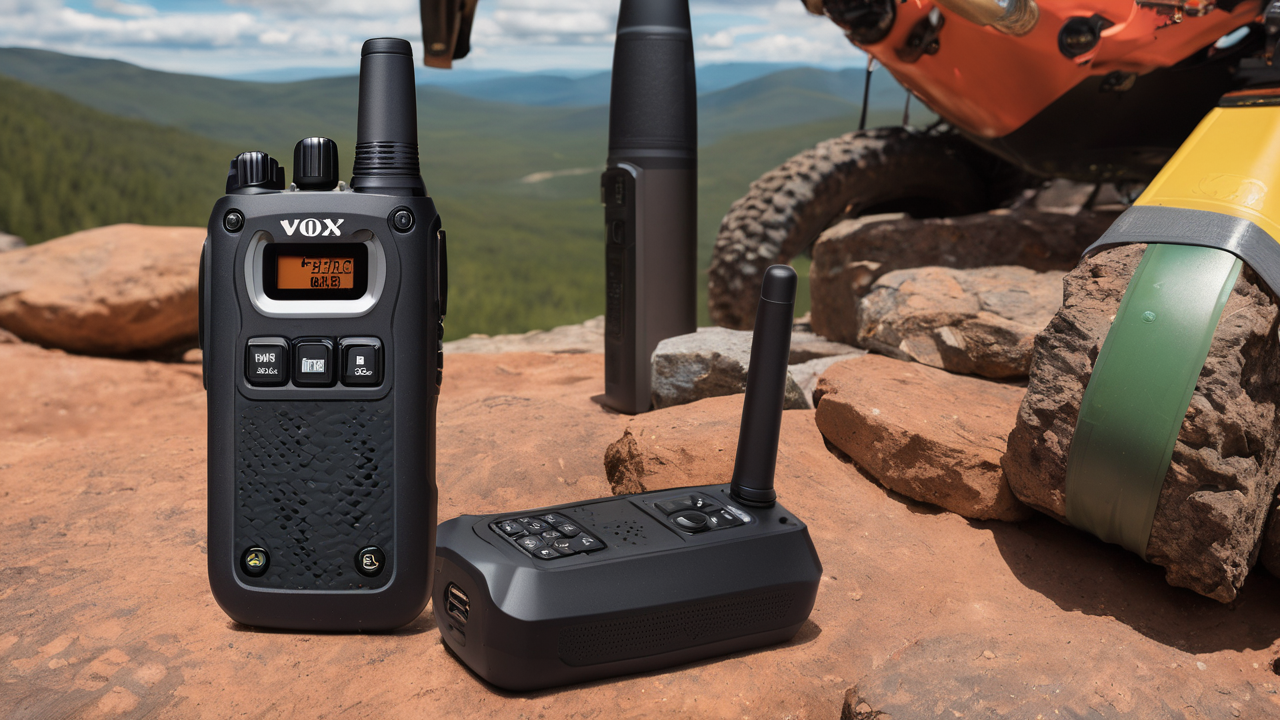Understanding Long Range Walkie Talkies and Their Capabilities
What Are Long Range Walkie Talkies?
Long range walkie talkies are portable two-way radios designed for long-distance communication. They use radio waves to transmit voice over extended distances, often up to 100 miles or more. These devices are crucial for outdoor enthusiasts, emergency responders, and professionals working in remote areas.

Long range walkie talkies differ from standard models in their power output and frequency range. They typically operate on lower frequencies, allowing signals to travel farther. These devices are ideal for areas with limited cell phone coverage or during emergencies when other communication methods fail.
Key Features of Long Range Walkie Talkies
Long range walkie talkies come with several essential features:
- High-power transmission (usually 4-5 watts)
- Multiple channels for clear communication
- Weather alerts and NOAA weather radio
- Long battery life, often 12-24 hours
- Durable, waterproof construction
- GPS functionality in some models
- Privacy codes to prevent interference
- VOX (Voice-Activated Exchange) for hands-free use
These features ensure reliable communication over vast distances, even in challenging conditions. The combination of power and functionality makes them indispensable for many users.
The Importance of Range in Walkie Talkie Selection
Range is a crucial factor when choosing walkie talkies for long-distance communication. The advertised range often refers to ideal conditions, such as line-of-sight communication with no obstacles. In reality, the effective range can be significantly less due to various factors.
Terrain, weather, and obstacles like buildings or mountains can affect signal transmission. Urban areas with many structures may limit range more than open rural spaces. It's essential to consider your specific environment and needs when selecting a long range walkie talkie.
While 100-mile range is impressive, it's rare to achieve this in real-world conditions. However, long range models still outperform standard walkie talkies in most situations. They provide a reliable communication option when cell phones or other devices aren't viable.
Top Long Range Walkie Talkies on the Market
Kenwood TK-736
The Kenwood TK-736 is a professional-grade long range walkie talkie known for its exceptional performance. It boasts:

- Up to 100-mile range in ideal conditions
- 5-watt power output for strong signal transmission
- 128 channels for flexible communication options
- Rugged, water-resistant design for durability
- Long battery life, lasting up to 18 hours
- Clear, crisp audio quality even at long distances
Users praise the TK-736 for its reliability in remote areas and challenging environments. Its robust build quality makes it suitable for outdoor adventures and professional use alike. While pricier than some alternatives, many users find the investment worthwhile for its performance.
Motorola RD-2059
Motorola's RD-2059 is another top contender in the long range walkie talkie market. Its features include:
- Claimed range of up to 100 miles in optimal conditions
- 4-watt power output for extended reach
- 22 channels with 121 privacy codes
- Weather alerts and NOAA weather radio access
- Waterproof design for use in any weather
- Up to 15 hours of battery life
The RD-2059 balances performance with user-friendly features. Its weather alert function is particularly valued by outdoor enthusiasts. Users appreciate its clear audio and reliable connection, even in areas with limited cell coverage.
Best Selling Long Range Walkie Talkie: The Midland G710
The Midland G710 is a popular choice for its balance of features and affordability. Key attributes include:
- Range of up to 65 miles in ideal conditions
- 4-watt power output
- 50 channels with 142 privacy codes
- NOAA weather scan and alert
- Water-resistant design
- Up to 14 hours of battery life
While its range is less than some competitors, the G710 offers excellent value for money. It's user-friendly and provides reliable communication for most outdoor activities. Many users find it sufficient for their needs without the higher price tag of professional models.
Factors to Consider When Purchasing Long Range Walkie Talkies
Assessing Your Specific Communication Needs
Before buying long range walkie talkies, consider your specific needs:

- Distance: How far do you need to communicate?
- Environment: Will you use them in urban areas, forests, or open terrain?
- Frequency of use: Occasional or regular use?
- Group size: How many people need to communicate simultaneously?
- Features: Do you need weather alerts, GPS, or other special functions?
Understanding these factors will help you choose the right model. For example, if you need communication in dense forests, prioritize models with stronger signal penetration. If you're using them for emergency preparedness, weather alert features might be crucial.
Comparing Durability and Battery Life
Long range walkie talkies often face challenging conditions. Consider:
- Build quality: Look for rugged, shock-resistant designs
- Water resistance: Important for outdoor use in various weather conditions
- Battery life: Longer is better, especially for extended trips
- Charging options: Some models offer solar or hand-crank charging
Durability ensures your investment lasts, while good battery life keeps you connected when it matters most. Read user reviews to gauge real-world performance in these areas.
Navigating the Legalities of Long Range Communication in the US
Using long range walkie talkies in the US requires awareness of legal considerations:
- FCC regulations: Some frequencies require licenses
- Power limitations: Restrictions on transmission power in certain areas
- Privacy laws: Be aware of regulations regarding private communications
- State-specific rules: Some states have additional regulations
Research the specific laws applicable to your area and intended use. Ensure you're operating within legal boundaries to avoid fines or other penalties. When in doubt, consult with a communications expert or the FCC directly for guidance.


